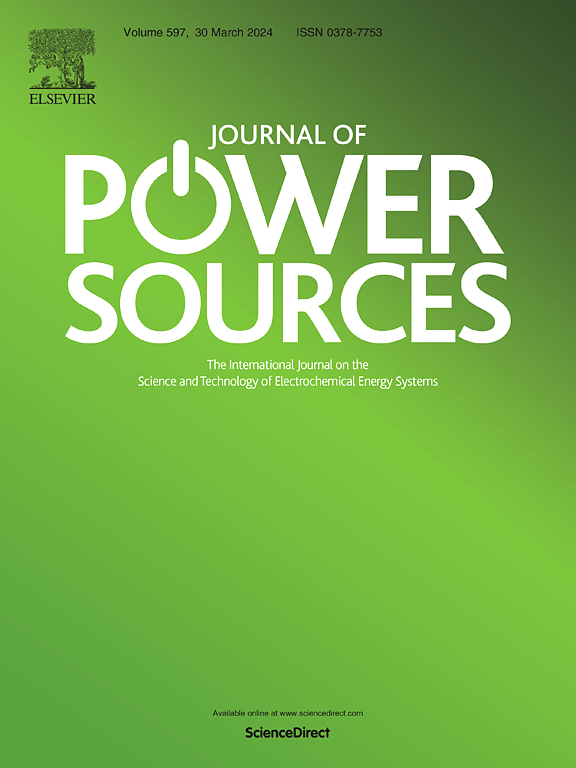Powering sustainability: High-performance supercapacitors using reduced graphene oxide from waste tires embedded with molybdenum disulfide
IF 8.1
2区 工程技术
Q1 CHEMISTRY, PHYSICAL
引用次数: 0
Abstract
This research proposes an innovative approach to supercapacitor development by leveraging materials derived from waste tires to effectively address both energy storage requirements and environmental sustainability challenges. Specifically in this work, we utilized two-dimensional (2D) reduced graphene oxide synthesized from waste tires (WT–rGO) through a two-step catalytic pyrolysis process, combined with hydrothermally synthesized molybdenum disulfide (MoS2). The synthesized materials were thoroughly characterized using various analytical techniques to confirm their structural and chemical properties. The optimized WT–rGO@MoS2 modified electrode demonstrates a specific capacitance of 576.4 F g−1 at 0.5 A g−1 and a low internal resistance of 0.65 Ω, which outperform other tested electrodes. The integration of these components is designed to leverage their combined advantages, including numerous catalytically active sites, high electrical conductivity, and high specific surface area. The symmetric device delivers an energy density of 30.36 Wh Kg−1 at 253.23 W kg−1 power density with excellent cyclic stability, which retains 92.6 % of original capacitance and achieves the coulombic efficiency of 113 % after 5000 cycles. Additionally, two series-connected devices power a light emitting diode (LED) to glow for up to 80 min. This study highlights the potential of repurposing waste materials for advanced, sustainable energy storage solutions.

求助全文
约1分钟内获得全文
求助全文
来源期刊

Journal of Power Sources
工程技术-电化学
CiteScore
16.40
自引率
6.50%
发文量
1249
审稿时长
36 days
期刊介绍:
The Journal of Power Sources is a publication catering to researchers and technologists interested in various aspects of the science, technology, and applications of electrochemical power sources. It covers original research and reviews on primary and secondary batteries, fuel cells, supercapacitors, and photo-electrochemical cells.
Topics considered include the research, development and applications of nanomaterials and novel componentry for these devices. Examples of applications of these electrochemical power sources include:
• Portable electronics
• Electric and Hybrid Electric Vehicles
• Uninterruptible Power Supply (UPS) systems
• Storage of renewable energy
• Satellites and deep space probes
• Boats and ships, drones and aircrafts
• Wearable energy storage systems
 求助内容:
求助内容: 应助结果提醒方式:
应助结果提醒方式:


